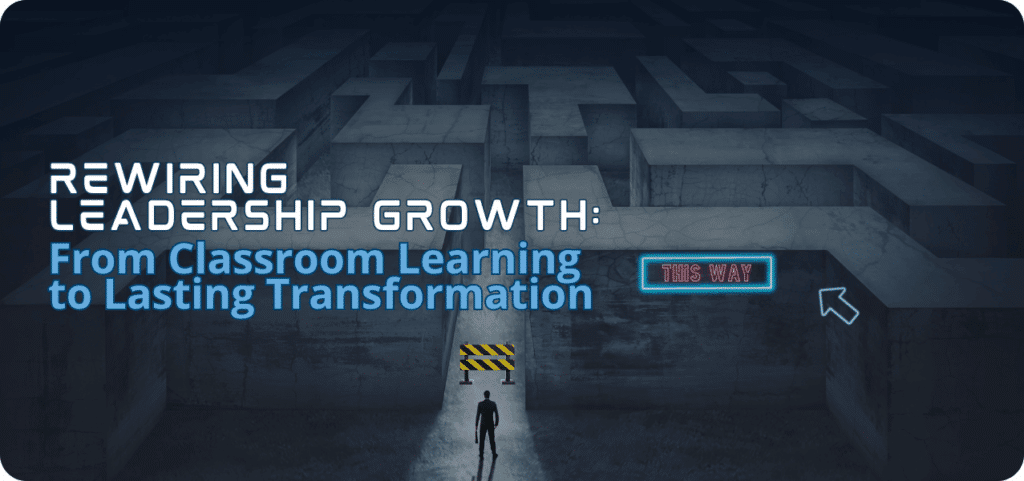5 Essential Mindsets for High-Performing Teams

Do people have talent or develop talent? Are problems really opportunities or threats? Is it ‘everyone for themselves’ or ‘all for one and one for all’?
The answers to these questions reflect mindset – the underlying attitudes that shape how a leader leads – as well as how people relate to one another on teams.
Mindset has an enormous impact on team performance. Dana Byrd, an organizational psychologist, licensed coach, and seasoned leadership facilitator has seen this first-hand in her extensive work with executives and high-potential cohorts.
“Mindset exerts an influence on our assumptions, perceptions, and reactions. If you don’t examine your mindset, it will impact your behavior without you being aware of it,” Byrd says.
Leaders set the tone for a team’s mindset, which in turn can have a measurable effect on engagement and performance. For instance, according to a recent study of 600 managers from the Growth Mindset Institute, leaders with a growth mindset had “overwhelmingly” higher team engagement scores than managers with a fixed mindset.
“Leaders create the world in which people work and live,” Byrd says. “Their mindset has a really powerful impact on culture as a lived experience, and obviously on the success of their teams.”
What Defines a High-Performing Team?
When we think about high-performing teams, we may consider hard metrics like productivity or efficiency. And of course, the definition of a high-performing team needs “to be anchored in what they are accomplishing together,” Byrd says.
But, she adds, “that success is fed by the team’s ability to do all these other more subtle dances every day together in terms of relationships and goal alignment.”
These “subtle dances” are key to a team’s long-term success. High-performing teams are continually examining their interpersonal dynamics and collective approach to challenges.
“It’s the process of asking, ‘What happened? What have you learned from it? How do we get better? How do we create space for one another to provide support, to share, learning to build resilience, to recover together?’” Byrd says.
Below, Byrd outlines five key mindsets that are common on high-performing teams.
High-Performing Teams Have …
1. A Growth Mindset
A growth mindset centers around the belief that people are capable of transformation. Leaders with a growth mindset believe in team members’ intrinsic potential to change and grow. This is a much more constructive approach than a fixed mindset – the belief that people ‘are what they are’ and can never meaningfully evolve.
“When (a growth mindset) is a shared value, we choose to believe that we are continually going to improve,” Byrd says. “It allows people to reinforce that for each other.”
What does this look like in practice? Leaders who model a growth mindset take the time to cultivate people’s strengths and support them when they fail. They believe in their team’s potential to overcome challenges. This, in turn, promotes shared learning and a commitment to challenging goals.
A growth mindset also extends to personal leadership development. Just as effective leaders recognize their team’s capacity to grow, they also acknowledge areas where they can still personally improve as leaders.
“Modeling these types of behaviors is really important,” Byrd says. “That can look like, ‘I made a mistake. I’m going to own it. We’re going to explore together what could have been better next time.’”
Ask yourself: Do I believe that people are fundamentally capable of growth and change? Am I modeling this for my team with my own willingness to grow as a leader?
2. A Curious Mindset
A curious mindset encourages people to view failure as a learning opportunity. As a result, people become less defensive and more creative and solution-focused.
A curious mindset focuses on thoughts such as:
Let’s approach problems with curiosity instead of jumping to blame. What if we ask non-judgmental questions like, ‘What went wrong here and what factors may have contributed? Is there support we can provide that would create a different outcome in the future? How, as a team, can we approach this better next time?’
“It again comes back to the fundamental question of, what is this failure telling us?” Byrd says. “Is it telling us that we’re bad and we can’t handle this or is it giving us an opportunity to be even better next time? I think that when you have that belief, it enables you to be more curious and enables you to explore what happened more deeply.”
In a non-blaming, curious culture, people feel psychological safety – a sense that they can safely take risks, and still be supported even if they fail. They know that one mistake will not cost them the leader’s respect and trust.
“Psychological safety is really important,” Byrd says. “When everybody feels sure there are not going to be putting themselves reputationally or emotionally at risk, everyone contributes. Ideas get vetted and hashed out more thoroughly.”
Ask yourself: When something goes wrong, do I go into blame mode, or am I approaching the problem with genuine curiosity about why things went off track? Do people on my team feel safe enough to take risks, and possibly fail?
3. An Interdependent Mindset
The word ‘team’ implies collaboration, but this is not always the case in practice.
“I think sometimes teams get formed and we call them teams, but they’re not really teams,” Byrd says. “They’re just a collection of individuals doing their own separate thing.”
On a team characterized by an independent mindset, people are mainly concerned with their own success. They may feel pressure to take on challenges without input from others. This can lead to a lack of trust between team members. People hoard information and fail to communicate effectively. Ultimately, this individualistic approach makes teams less resilient when faced with challenges that require the pooling of everyone’s expertise.
By contrast, teams with an interdependent mindset become more than the sum of their parts. People put their egos aside and make sacrifices for the company’s broader mission. This could mean sacrificing your own goals to support the goal of a team member if it’s better for the team’s long-term shared objectives.
“You can’t just be responsible for your piece of the pie,” Byrd says. “You also need to feel responsible for reaching across and providing support, and feeling a sense of responsibility to everyone on your team.”
This collaborative mindset fosters team cohesion, as well as a sense of psychological safety. People feel that they can safely take risks and admit when they need help, while knowing they still have support from the leader and the rest of the team.
On team with an interdependent mindset, people collaborate without feeling threatened by others’ success. They believe that the team works best when people work together.
Ask yourself: Does my team have a shared outcome that we’re trying to achieve together? Are we able to collaborate and make sacrifices for our long-term goals?
4. A Learning Mindset
Teams with a healthy learning mindset have regular, effective debriefs. Facilitate opportunities for your team to reflect on successes and challenges in a safe environment. Focus on learning from what went right (or wrong) and how the team can handle similar situations in the future.
During these debriefs, acknowledge that you don’t have all the answers. These meetings are an opportunity for you to learn about your own leadership, as well.
“It’s about examining your behavior, and getting your behavior in line with the mindset that is going to be helping you be more successful,” Byrd says. “For example, ‘How do I respond when someone on my team fails? Do I respond as if they are bad, and I’m kind of thinking about putting them on the chopping block? Or am I using that as an opportunity to build them and to build the team?’”
Also, apart from the debriefs, it’s worth spending time alone reflecting on your personal leadership development. Think about the underlying assumptions that influence the way you lead and deal with people.
Consider questions like, ‘Am I willing to learn from my own successes and setbacks? Do I think I know everything, or can I admit that I don’t have all the answers? Am I creating time and space for learning to happen?’
The more you model this kind of introspection for your team, the more they will take your cue and adopt a similar learning mindset. People will be willing to learn from their own mistakes, rather than view them as disasters. Ultimately, this self-awareness and willingness to learn as a team fosters collective resilience.
Ask yourself: Am I giving my team regular opportunities to safely reflect on successes and setbacks? Am I ‘walking the walk’ by examining my own beliefs and behavior?
- Read More: Take Our Growth Mindset Quiz
5. A Long-Term Mindset
On successful teams, people tend to find meaning in the group’s overall mission. Individual setbacks do not threaten the team’s broader sense of identity. People accept that both successes and failures are inevitable while working toward long-term goals.
Teams with a long-term mindset tend to be more resilient in the face of challenges. Leaders have the emotional maturity to not react to every setback as if it’s a disaster. As a leader, your thought process in the face of a problem could go something like this, Byrd says:
“This tiny incident that’s happening right now is not defining me, it’s not defining us. I’m defining success not in terms of this specific metric, but on a wider, more elevated perspective. Instead of feeling deflated in the face of challenge, I understand that this moment is just a pearl on a string. It’s not the whole story.”
This attitude ties back to the idea of psychological safety. People understand that one mistake does not threaten their value as a team member. Individual setbacks do not ‘make or break’ the team. Everyone is working toward a broader vision.
A long-term mindset creates intrinsic motivation by linking team performance to a wider sense of purpose.
“Fundamentally, people want meaning. They desire that deeply in their work,” Byrd says. “That greater sense of meaning, purpose, and vision is what allows people to align around their work, and align their goals.”
Ask yourself: Does every success or failure along the way ‘make or break’ us as a team? Do we react to every problem as if it’s a crisis? Do we accept that there will be highs and lows as we work together toward a wider long-term mission?
Want more information on leading your team to the next level of excellence? Consider our experiential learning solutions to address the unique needs and challenges facing your organization. Each program provides unique experiences that improve the leadership of individuals, teams and organizations. Contact Us to learn more.
Author
Subscribe to get Access to Exclusive Content





